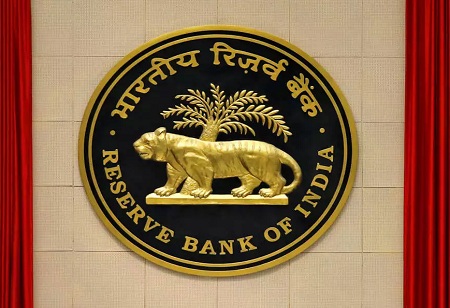RBI may review its toolbox for managing bank liquidity
By Consultants Review Team
 The Reserve Bank of India (RBI) may have to redraw its calculations and possibly dust off some tools in light of an unanticipated improvement in banking system liquidity in order to skillfully manage money in the banking system while protecting the rupee from undue volatility. The RBI's decision to remove 2,000 notes from circulation and its higher-than-anticipated surplus transfer to the government have significantly changed the availability of liquidity for the banking system. Both of the RBI's Friday night pronouncements, which were issued one after the other, will increase the liquidity of the banking system, albeit in different ways.
The Reserve Bank of India (RBI) may have to redraw its calculations and possibly dust off some tools in light of an unanticipated improvement in banking system liquidity in order to skillfully manage money in the banking system while protecting the rupee from undue volatility. The RBI's decision to remove 2,000 notes from circulation and its higher-than-anticipated surplus transfer to the government have significantly changed the availability of liquidity for the banking system. Both of the RBI's Friday night pronouncements, which were issued one after the other, will increase the liquidity of the banking system, albeit in different ways.
While the deposit of 2,000 notes with banks would result in a momentary gain in money, the transfer of the RBI's surplus of 87,416 crore to the government will increase the banking system's long-term liquidity. HSBC, Pranjul Bhandari and Aayushi Chaudhary, "the RBI will eventually have to decide the optimal amount of permanent liquidity it wants to keep in the system, which is in line with its inflation objective, and provide it via the two main sources." The amount of the 3.6 lakh crore worth of 2,000 note redemptions that will return to banks is unknown, but economists generally expected a range of 50,000 crore to 1 lakh crore.
OPEN MARKET OPERATIONS- With banking system liquidity suddenly receiving a boost following a month of tighter funding conditions, a conclusion amongst analysts is that the need for the RBI to purchase government bonds via open market operations (OMOs) reduces significantly.
Purchases of government bonds are a tool used by the RBI to infuse durable liquidity into the banking system. Prior to the RBI's announcements on Friday, bond traders were largely confident of the RBI commencing on such operations around October. Now, the central bank is seen delaying its bond buying. Fewer bond purchases by the RBI could weaken sentiment in the sovereign debt market, which is faced with a record-large government gross borrowing program of 15.4 lakh crore.
"We estimate 0.7-0.9 trillion of durable rise in system liquidity, which in turn reduces but does not eliminate the need for the RBI to do OMOs in 2HFY24 (October-March)," Emkay Global's economist Madhavi Arora said.
FX TOOLS- Standard Chartered Bank's economist Anubhuti Sahay said that a key determinant of the RBI's liquidity choices would be the behaviour of the rupee versus the US dollar. "If RBI keeps on accumulating FX reserves, it's another round of durable liquidity injection. But suppose the dollar strengthens and the RBI has to intervene on the other side, the liquidity would be absorbed by the RBI as they sell dollars in the market," she said.
Based on the extent of enhancement in liquidity, some traders said that a tool that the RBI could consider using was an FX swap under which it would sell dollars and immediately contracts to buy them back at a future date. The central bank has not used FX swap operations since March 2022.
Such an 'sell-buy' swap would not only drain out extra liquidity for the tenure of the contract but also push up dollar-rupee forward premia, which have fallen sharply of late. The dollar-rupee forward premia represent the interest rate differential between India and the US. A fall in Indian money market rates following improved liquidity has narrowed the differential further.




